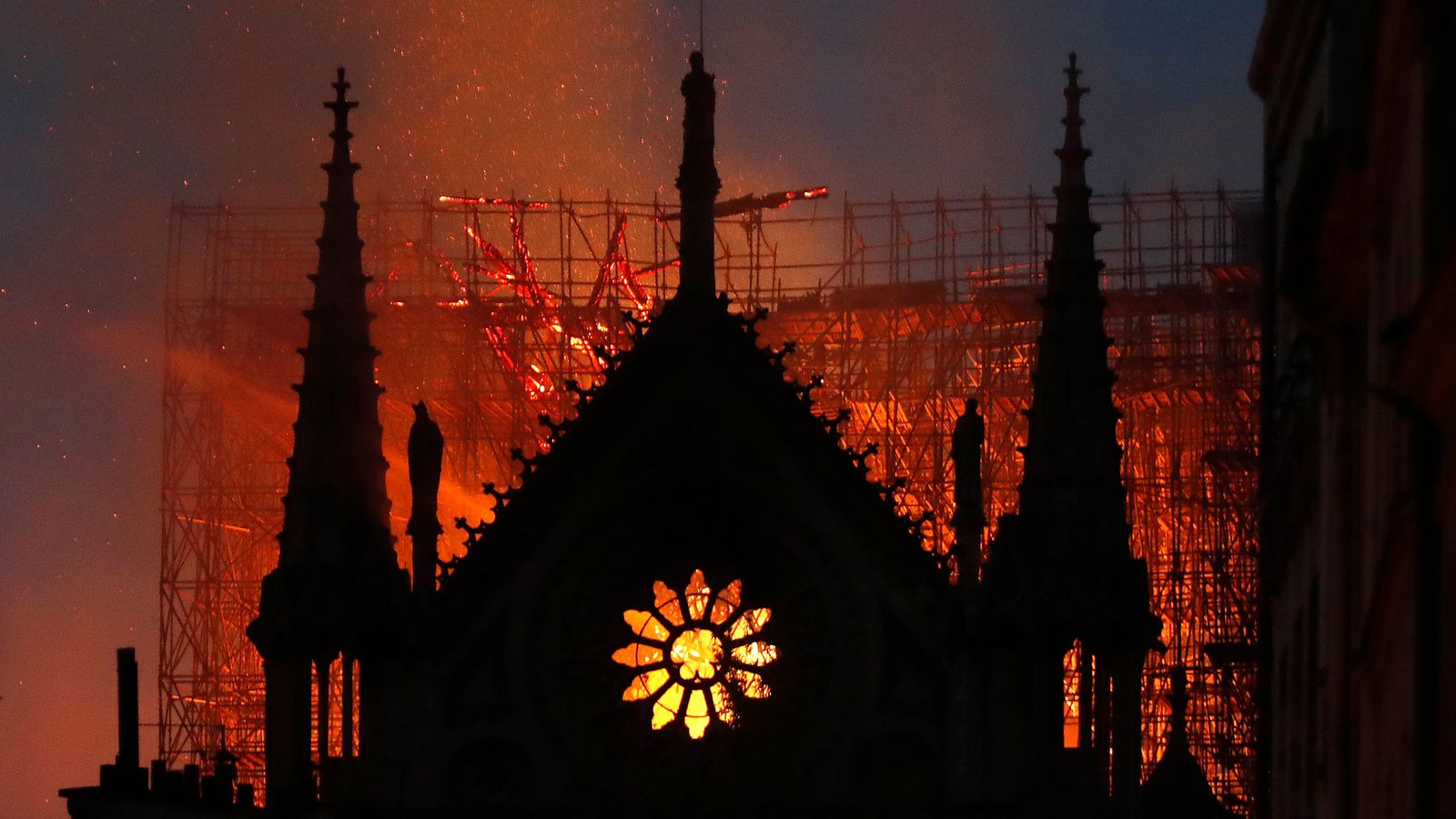The wooden spire of Notre-Dame cathedral is being re-built using centuries-old oak trees felled from a former royal forest – almost two years after it was destroyed in a fire.
The lead-coated spire, which for more than 150 years had defined the central Paris skyline, was consumed by the blaze in April 2019, collapsing through the stone-vaulted roof to the tears and gasps of distraught onlookers.
President Emmanuel Macron announced last summer the 96-metre (315ft) spire would be reconstructed as originally designed by Eugene Viollet-le-Duc in the 19th century, and the hunt for the 1,000 oaks required to build the spire and the frame of the cathedral’s transept began.
At the beginning of this year, the perfect trees were identified in Domaine de Berce, near Le Mans. They must all be chopped down before the end of March before the sap rises and the wood contains too much moisture.
Aymeric Albert, the French forestry commission’s commercial director, described the sawn trunk of one 200-year-old oak as “exceptional”.
The trunk was large enough to construct an 18-metre long beam that will help support the weight of the spire, he said, adding: “It’s perfectly straight and without any internal defects.”
The trunks, each of which are worth about 15,000 euros (£12,850), will be laid to dry for 12 to 18 months before being cut into shape.
The cathedral’s original roof contained so many oak beams it was called “la foret” (the forest).
Mr Albert said the selected trunks from the forest were the “perfect result” from two centuries of skilled work in a forest that previously supplied timber to the French navy.
“Now we’ll leave room for a new generation of oaks which in 200 years will create the same forest we see today,” he said.
The public body in charge of Notre-Dame’s restoration had vowed to restore the cathedral to the original Gothic design it was before fire.






















